- Details
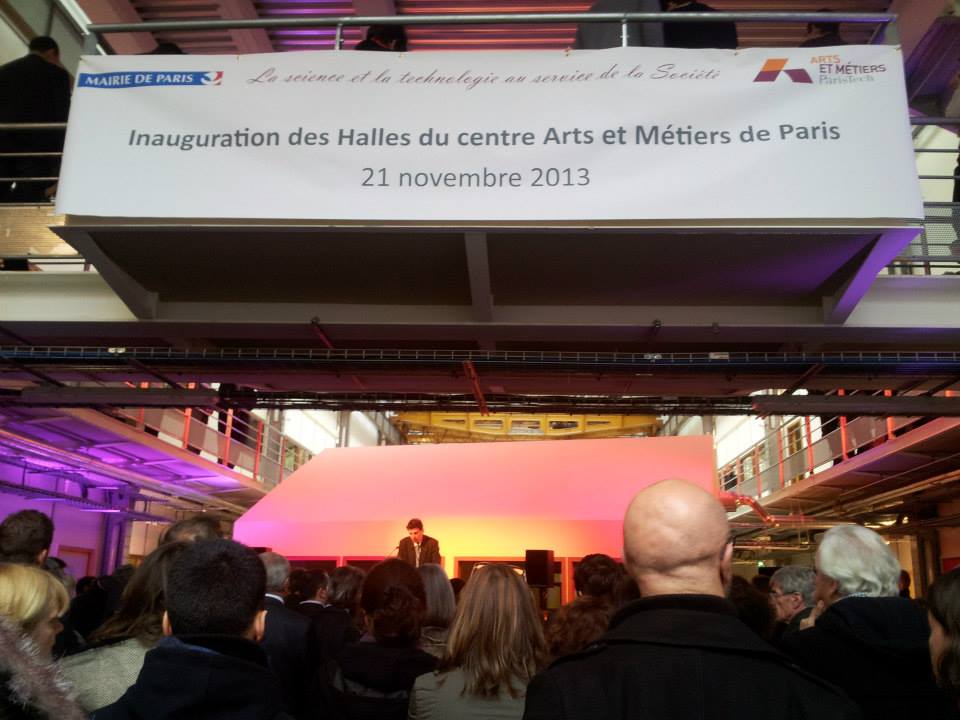
ENSAM Director Laurent Carraro delivers his grand reopening speech
On November 21 2013, Laurent Carraro, Director of Arts et Métiers ParisTech and Eric Savattero, Director of the Paris Center, rededicated the two recently renovated laboratories, Laboratoire Bioméchanique (LBM) and the Laboratoire Conception de Produit et Innovation (LCPI).
Begun in 2010, by architect Patrick Mauger Cabinet, the main objective of the the renovation for the two labs was to increase the space available to students and researchers required for academic instruction as well as research.
Both laboratories have ties to the USA, sharing in research projects and exchanges with NYU, Mayo Clinic, Harvard Medical School, and MIT.
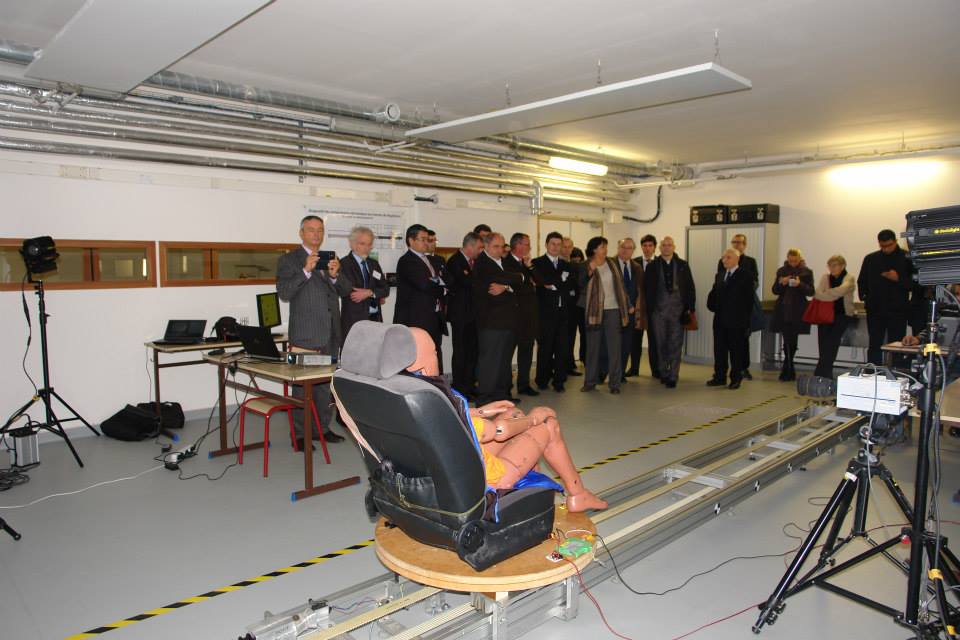 |
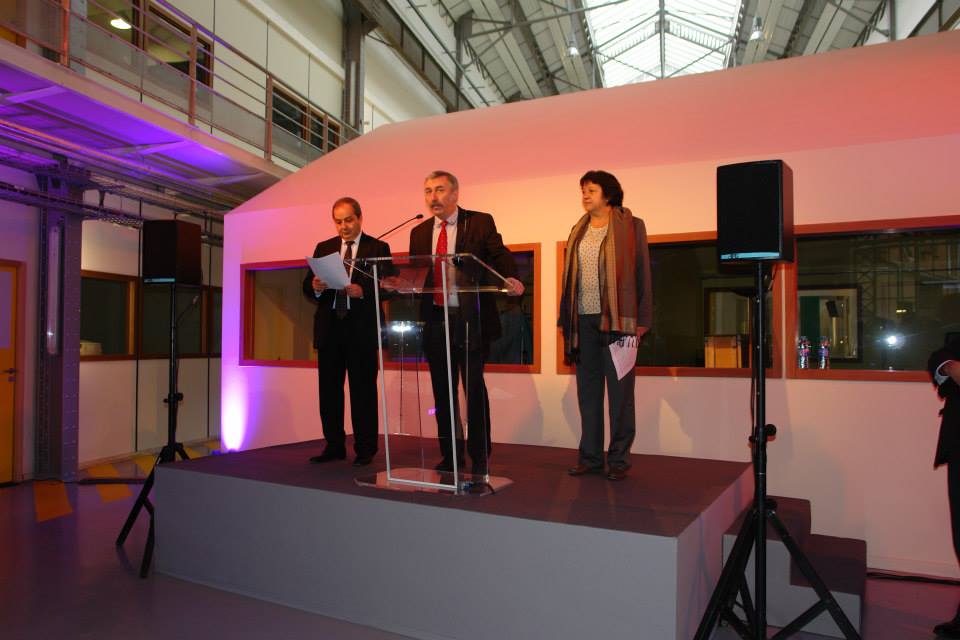 |
| Biomechanical Lab- crash-test room | Améziane Aoussat, LCPI Director, Eric Savattero, Director of Paris Center, Wafa Skalli, LBM Director |
More about the Laboratory of Biomechanics
2000 m2 renovated facilities are fully dedicated to research in neuro-musculo-skeletal biomechanics. The associated technological platform comprises a unique combination of:
• In vitro biomechanical analysis equipment for joint and tissue characterization, and for the design and evaluation of surgical techniques and innovative implants, including an experimental surgery room and static or dynamic testing devices.
• Quantitative in vivo functional analysis, including the EOS system, gait lab, ultrasound elastography device, …
• Software platform for biomedical modeling and medical imaging
This site has been designed as a scientific hub for reinforcement of education and research links between clinicians, engineers and industry, with a common aim of "better understanding to better innovate, to the service of patients and society”
The announcement of the creation of the “Georges Charpak Human Biomechanics Institute" pays tribute to this brilliant scientist with great humanity who was, together with the Biomechanics Laboratory, the Saint Vincent de Paul hospital and the EOS Imaging Society, at the heart of the design of the EOS System, which constitutes a genuine revolution in low dose 3D imaging of the skeleton.
The signing of a partnership agreement with the ‘Public Hospitals of Paris’ organisation marks a strong commitment toward reinforcing synergies and pooling of resources.
With these new facilities, Arts et Métiers ParisTech is structured to achieve the goal of contributing to 21st century medical technology.
For more information:
Press Release- en français
Biomechanical Lab - en français
Product Design & Innovation Lab- English
- Details
Diplôme d'ingénieur recognized as master's degree in engineering
Standards in the higher education industry have normally validated the diplôme d'ingénieur as the equivalent to a Bachelor's of Science in American universities and higher education institutions. This presented several obstacles for students trying to have an academic exchange at the graduate level in the USA and for recent graduates looking to begin their career in positions asking for a minimum qualification of a master's degree.
In the past, Arts et Métiers ParisTech had to reach out individually to each American university to validate the level of ENSAM students at a master's level, in order for the students to be admitted at the master's degree level.
This may no longer be necessary thanks to a new discussion about the requirement and US equivalent of the diplome d'ingenier.
In 2012 two influential organizations were involed in the discussion and revision of the equivalent to the diplome d'ingenieur:
-
The American Association of Collegiate Registrars and Admissions Officers (AACRAO) is a professional membership organization that tasks itself with validating, translating, and admitting higher education credits, degrees, and enrollment.
-
CAMPUSFRANCE, the French national agency that promotes international student mobility to French higher education institutions.
Revisiting the length of study, European Credits (with the equivalent US semster hours) allowed for this new placement recommendation.
Following the new dialogue between AACRAO and CAMPUSFRANCE, in 2013 the International Education Standards Council (IESC) used this information to change the credential advice for the diplome d'ingenieur to the "attainment of a level of education comparable to a master’s degree in engineering in the United States."
More information:
Source: [In French] - Higher Education Accord
- Details
From time to time we feature a member of our US based alumni community. We hope this serves as a way to stay in touch and get to know one another despite the grand size of the US.
Alumnus and AFAM board member Claude Leglise (AN 74) is our next AFAM member profile.
Thank you Claudefor sharing with us!
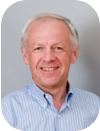
1. Tell us about your career path and area of expertise today. How did it come about?
I had a 23-year career at Intel riding the growth wave of the PC industry in three phases: first in marketing, then in general management, finally in venture capital. In 2007, I started a solar electricity services company with a long-time friend of mine. Today, I split my time between several activities: the solar company that is still operating, innovation management consulting for research institutions, a directorship of a public semiconductor company, and advisory jobs for several start-ups. I am also trying to start a cancer research center in China.
2. What do you do every day at work? How does being a Gadz’Arts help you in your everyday tasks and team management?
As you can guess from my various jobs, there is never a typical day. I jump around between tasks; it is really a lot like the Gadz’Arts training where I learned about pumps, computers, foundry and pre-stressed concrete. Having a generalist’s education allows me to get involved in many different domains, and also to recognize when I need to hire experts.
3. How did you come to the US- why and when? How is your work life different than in France?
I came to the US two years after graduating from A&M to go to business school at Stanford, and I never went back. With a degree in engineering and one in business, it was easy to find a job in Silicon Valley. I did not work in France long enough to know for sure how different things are. Here I enjoy the freedom and the trust employers give employees, in particular the much lower importance of the school and the degree one has attended, and the focus on results. Of course, with Silicon Valley at the center of the computer and communications revolution of the past 30 years, I could not have the jobs I had if I had remained in France.
4. What is the best advice someone ever gave you? Why?
In the mid-90s, I wanted to start a new Intel activity to work with the software industry, and I was being cautious about goals and spending. Andy Grove, who was the CEO, told me: “I would rather have you spend $50M and win, than spend $40M and finish second.” This is a lesson I have applied ever since, in my business and personal life.
5. What is one favorite way to spend your free time (hobbies, weekend activities)?
When I don’t race Porsches with the local club, I spend time on my garden railroad (which by the way leverages most of my Gadz’Arts skills). I also enjoy traveling and photography. In our spare time, my wife and I are learning Chinese.
Thank you again to Claude for sharing his experience and thoughts on life in the USA for Gadz'Arts! AFAM is grateful for your support.
- Details
American Friends of Arts et Métiers is proud to have its own newsletter!
The AFAM newsletter serves as a summary of AFAM's activities each month and as a way to connect alumni in the USA.

You can view previous issues here.
Subscribe to our newsletter by entering your email on the left.
If you would like to contribute to the newsletter, please contact the newsletter team by emailing newsletter [at] americanfriendsam.org
- Details
  |
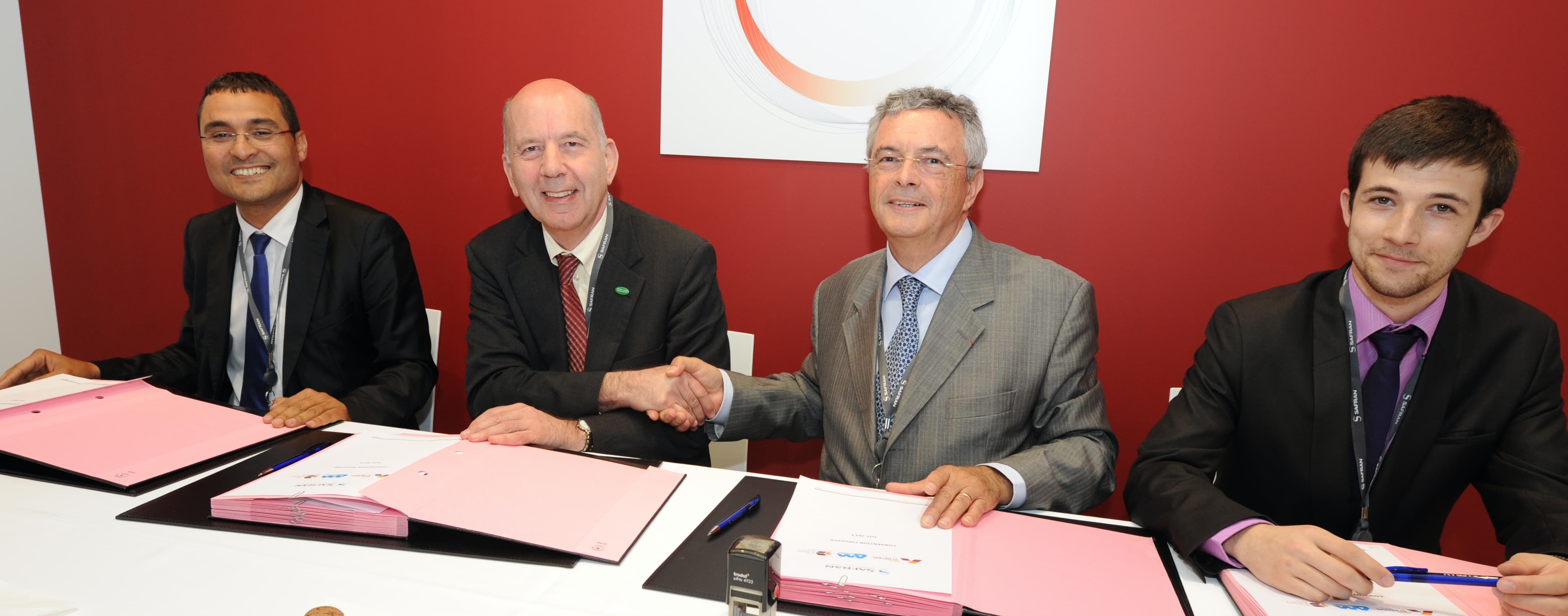 |
| From left to right: M. El Mansori (Arts et Métiers), E. Bachelet (Safran), J. Paccard (Fondation Arts et Métiers), G. Asconchilo (UE Arts et Métiers) |
| Safran signed a research agreement with the Ecole Nationale Supérieure des Arts et Métiers (ENSAM, the French leading engineering school in the fields of mechanics and industrialization), at the Paris Air Show, on Friday June 21. This is the first time that ENSAM has joined forces with a private company to work on research. This agreement was signed in the presence of Eric Bachelet, Safran Executive Vice President, Research & Technology, and Mohamed El Mansori, ENSAM Deputy Director General for Research and Innovation. Safran has selected an ENSAM student close to graduation to write a thesis at CalTech*, a US-based engineering school that has earned an outstanding reputation in the aviation sector. Safran needs to hire 7,000 employees in 2013 and sees ENSAM as a prime recruitment channel. This agreement is an opportunity to build Safran’s exposure among engineering school students in France and around the world. * California Institute of Technology Photo: © Antoine Denoix / Safran source: http://lebourget.safran-group.com/pictures/photos/safran-signs-research-agreement-with-ensam.html |

 BLOG /
BLOG /  CALENDAR /
CALENDAR /  DONATIONS /
DONATIONS /  MENTORS /
MENTORS /